Table Of Contents:
- Keyword Research
- Optimize Product Descriptions
- Optimize Images
- Mobile Optimization
- Page Loading Speed
- User-Friendly URLs
- Quality Content
- Social Media Integration
- Local SEO
- Monitor Analytics
- Conclusion
In the highly competitive world of e-commerce, achieving better search engine rankings is crucial for the success of auto-accessory websites. With countless online stores vying for attention, implementing effective SEO strategies can significantly boost visibility and drive more organic traffic to your site. Here are some simple yet powerful SEO tips to help your auto accessory website climb the search engine rankings:
1. Keyword Research:
Keyword research is a fundamental step in any successful SEO strategy. It involves identifying and targeting the right keywords that your potential customers are using to search for products or services in your niche. Effective keyword research can significantly improve your website’s search engine rankings and visibility. Here are some key aspects to consider when conducting keyword research:
- Your niche should include relevant keywords:
The first step in keyword research is to ensure that your chosen niche incorporates relevant keywords. These keywords accurately represent the products or services you offer and align with the interests and needs of your target audience.
- Search for keywords with high traffic and low competition using tools like SEMrush and Google Keyword Planner:
To maximize the effectiveness of your SEO efforts, focus on keywords that strike a balance between high search traffic and low competition. Tools like SEMrush and Google Keyword Planner can help you identify these keywords by providing data on search volume and competition levels.
- Long-tail keywords, which potential customers are likely to use to search, should be included in your search terms:
In addition to targeting broad keywords, it’s essential to include long-tail keywords in your search terms. Long-tail keywords are more specific and detailed phrases that potential customers are likely to use when conducting highly targeted searches. These keywords often have less competition, making it easier for your website to rank for them. Including a mix of both broad and long-tail keywords in your SEO strategy can help you capture a broader range of potential customers.
In summary, keyword research is the foundation of a successful SEO campaign. By selecting the right keywords for your niche, optimizing your website’s content around them, and regularly monitoring their performance, you can improve your website’s search engine rankings, drive organic traffic, and ultimately increase your online visibility and conversions.
2. Optimize Product Descriptions:
Optimizing your product descriptions is a crucial aspect of your e-commerce website’s success. Well-crafted product descriptions can not only engage potential customers but also improve your website’s search engine visibility. Here are key strategies to consider when optimizing your product descriptions:
- Use natural keywords in your product descriptions to make them compelling and unique:
Incorporate relevant keywords naturally into your product descriptions. These keywords should seamlessly blend into the content, enhancing its readability and ensuring that it resonates with both human readers and search engine algorithms. Avoid keyword stuffing, which can negatively impact the
- Focus on the benefits and features of each accessory to provide valuable information to customers and search engines:
When writing product descriptions, shift your focus from just listing features to highlighting the benefits that customers will derive from each accessory. Explain how the product can solve a problem or fulfill a need. This not only aids potential buyers in their decision-making process but also provides valuable content for search engines to index.
A well-optimized product description strikes a balance between SEO and user engagement. It should provide informative content that addresses customer concerns and incorporates relevant keywords organically. By following these practices, you can create compelling and unique product descriptions that contribute to higher search engine rankings and increased conversions on your e-commerce website.
3. Optimize Images:
Optimizing images on your website is crucial not only for providing an appealing visual experience to users but also for enhancing your site’s search engine visibility. Properly optimized images can improve your website’s performance in image search results. Here’s how to optimize images effectively:
- Use high-quality images of your auto accessories:
The first step in image optimization is to ensure that you use high-quality images of your auto accessories. Clear, sharp, and well-composed images not only engage visitors but also reflect positively on your brand’s professionalism and attention to detail.
- The file name and alt tags of images should contain descriptive keywords to improve image search visibility:
To boost image search visibility, it’s essential to optimize image file names and alt tags. When naming image files, use descriptive keywords related to the product or accessory being displayed. Additionally, include these keywords in the alt tags of the images. Alt tags not only provide accessibility for visually impaired users but also provide search engines with valuable context about the content of the image.
Effective image optimization doesn’t just enhance the visual appeal of your website; it also contributes to your SEO efforts. By using high-quality images and incorporating relevant keywords into file names and alt tags, you can improve your website’s image search visibility and attract more organic traffic.
4. Mobile Optimization:
In today’s digital landscape, mobile optimization is imperative for a successful online presence. Google’s emphasis on mobile-first indexing makes it essential for websites to provide a seamless experience on mobile devices. Here’s how you can ensure mobile optimization for your website:
- Since Google prioritizes mobile-first indexing, keep your website mobile-friendly:
With Google’s mobile-first indexing, the search engine primarily uses the mobile version of your website to rank and index content. Therefore, it’s crucial to ensure that your website is mobile-friendly. This means that your site should adapt and function effectively on various mobile devices, including smartphones and tablets. Mobile-friendly websites not only satisfy Google’s requirements but also provide an improved user experience for mobile visitors.
- Google’s Mobile-Friendly Test can help you determine how responsive your website is on mobile devices:
To assess the mobile-friendliness of your website, utilize Google’s Mobile-Friendly Test. This tool evaluates your site’s responsiveness and identifies any issues that may hinder mobile user experience. By addressing the recommendations provided by the test, you can enhance your website’s performance on mobile devices.
In conclusion, mobile optimization is no longer optional but a necessity in the digital age. Ensuring that your website is mobile-friendly and utilizing tools like Google’s Mobile-Friendly Test will not only align with Google’s indexing priorities but also improve user satisfaction and lead to higher search engine rankings.
5. Page Loading Speed:
The speed at which your web pages load is a critical factor in both user experience and search engine rankings. Faster page loading speed not only improves user satisfaction but also aligns with search engine algorithms. Here’s how you can enhance your website’s page loading speed:
- User experience and search engine algorithms will be improved with a faster page loading speed:
A fast-loading website is essential for a positive user experience. Users expect web pages to load quickly, and slow-loading pages can lead to frustration and high bounce rates. Beyond user satisfaction, search engines like Google, consider page speed as a ranking factor. Faster-loading pages are more likely to rank higher in search results.
- Utilize a Content Delivery Network (CDN) and compress images to speed up your website:
To optimize your website’s page loading speed, consider implementing a Content Delivery Network (CDN). A CDN distributes your website’s content across multiple servers located in different geographic regions, ensuring that users receive content from a server nearest to their location. Additionally, compressing images can significantly reduce page load times without compromising image quality. Compressed images load faster and contribute to a smoother user experience.
In summary, prioritizing page loading speed is crucial for both user satisfaction and SEO. A fast-loading website not only keeps visitors engaged but also enhances your chances of ranking higher in search engine results. By utilizing a Content Delivery Network (CDN) and optimizing images, you can effectively speed up your website and improve its overall performance.
6. User-Friendly URLs:
Creating user-friendly URLs is an essential aspect of website optimization. These URLs not only enhance the user experience but also contribute to better search engine visibility. Here are key principles to consider when designing user-friendly URLs:
- You should create URLs that are easy to read and have relevant keywords:
When structuring your website’s URLs, aim for readability and relevance. Choose words and phrases that accurately represent the content of the page and are easy for users to understand at a glance. Including relevant keywords in the URL helps both search engines and users quickly grasp the page’s topic.
- Use descriptive URLs that represent the content of the page instead of generic ones:
Avoid generic or cryptic URLs that provide little context about the page’s content. Instead, opt for descriptive URLs that clearly convey what the page is about. Descriptive URLs not only assist users in navigating your website but also provide search engines with valuable information for indexing and ranking purposes.
In summary, user-friendly URLs are a fundamental component of website optimization. They should be designed for both human readability and search engine relevance. By creating URLs that are easy to read, incorporate relevant keywords, and provide clear descriptions of the page’s content, you can improve both the user experience and your website’s search engine performance.
7. Quality Content:
Delivering high-quality content is a cornerstone of effective online marketing and SEO. Quality content not only engages and informs your audience but also plays a significant role in search engine rankings. Here’s how to ensure the creation of quality content on your website:
- Regularly update your website with fresh, high-quality content:
Keeping your website up-to-date with fresh, relevant content is vital. Search engines favor websites that regularly publish new and valuable content. This not only signals to search engines that your site is active and authoritative but also provides visitors with a reason to return. Consistency in content updates can lead to improved search rankings and a loyal audience.
- Consider a blog section to provide informative articles, DIY guides, and other relevant content related to auto accessories:
A blog section can be a valuable addition to your website. It allows you to publish informative articles, DIY guides, product reviews, and other content related to auto accessories. This not only showcases your expertise but also provides valuable information to your audience. Blog posts can be optimized with relevant keywords to attract organic traffic and establish your website as an authority in your niche.
In conclusion, quality content is a crucial driver of SEO success. By regularly updating your website with fresh, informative, and engaging content and by incorporating a blog section to address the specific interests and needs of your target audience, you can enhance your website’s visibility, user engagement, and overall online presence.
8. Social Media Integration:
Integrating social media into your online marketing strategy can have a significant impact on your website’s visibility and engagement. Social media platforms provide opportunities to promote your products and connect with your audience. Here’s how social media integration can benefit your website’s SEO and overall online presence:
- Promoting your products and engaging with your audience can be done through social media platforms:
Social media platforms offer a powerful channel for promoting your auto accessories and directly engaging with your target audience. You can create posts, share product updates, run targeted ad campaigns, and interact with customers to build brand loyalty and drive traffic to your website.
- Your website’s search engine rankings may be positively impacted by social signals, such as likes and shares with social media marketing:
Social media activity can indirectly influence your website’s search engine rankings. Social signals, such as likes, shares, and comments on your social media posts, demonstrate user engagement and interest in your content. Search engines like Google may take these signals into account when determining the relevance and authority of your website. Therefore, a strong social media presence and effective social media marketing can indirectly contribute to improved search engine rankings.
In summary, social media integration is a valuable component of your online marketing strategy. By leveraging social media platforms to promote your products, engage with your audience, and generate social signals, you can enhance your website’s visibility, attract organic traffic, and improve your overall online presence.
9. Local SEO:
Local SEO is crucial for businesses that aim to attract customers from specific geographic areas. It involves optimizing your online presence to rank higher in local search results. Here are key strategies to consider for effective local SEO:
- Improving your Google My Business listing will rank higher in local searches if you claim it and update it:
Claiming and optimizing your Google My Business (GMB) listing is essential for local SEO. Ensure that your GMB listing is accurate and up-to-date with your business name, address, phone number, business hours, website URL, and high-quality images. Regularly update your GMB profile with relevant posts and customer reviews to enhance its visibility in local searches.
- Your local area is the best place to attract customers, in local SEO, you should include keywords specific to your area on your website.
To improve your local search rankings, incorporate location-specific keywords throughout your website. Include your city, region, or neighborhood in your website’s content, meta tags, and headings. This helps search engines understand the geographic relevance of your business and connect you with users searching for products or services in your area.
In conclusion, local SEO is essential for businesses looking to attract local customers. By optimizing your Google My Business listing and integrating location-specific keywords into your website’s content, you can increase your visibility in local searches, connect with your target audience, and drive foot traffic to your physical location or website.
10. Monitor Analytics:
Analyzing website analytics is a crucial part of managing and optimizing your online presence. By regularly monitoring data and metrics, you can make informed decisions and adjustments to improve your website’s performance. Here’s how to effectively monitor website analytics:
- Your website’s performance can be monitored with tools such as Google Analytics:
Utilize tools like Google Analytics to track and analyze various aspects of your website’s performance. Google Analytics provides valuable insights into user behavior, traffic sources, and engagement metrics, allowing you to gain a deep understanding of how visitors interact with your site.
- Bounce rates, click-through rates, and conversion rates need to be monitored in order to make informed decisions and adjustments.
Pay close attention to key performance indicators such as bounce rates, click-through rates, and conversion rates. These metrics offer valuable insights into user engagement and the effectiveness of your website’s content and design. High bounce rates may indicate issues with landing page relevance, while low conversion rates may suggest the need for improvements in your call-to-action strategies. Regularly analyzing these metrics enables you to identify areas for improvement and implement data-driven optimizations.
In summary, monitoring website analytics is essential for assessing your online performance and making data-driven improvements. By using tools like Google Analytics and focusing on key metrics like bounce rates, click-through rates, and conversion rates, you can refine your website’s user experience, content strategy, and overall effectiveness, ultimately leading to better results and a more successful online presence.
Conclusion:
By implementing these simple SEO tips, you can significantly improve the online visibility of your auto accessory website and effectively reach a more targeted and relevant audience. However, it’s essential to recognize that SEO is not a static endeavor; it’s a dynamic and evolving field. Staying current with search engine algorithms and industry trends is imperative to sustaining your SEO success over the long term.
Search engine algorithms, such as those used by Google and other major search engines, undergo regular updates and refinements. These changes often impact how websites are ranked and displayed in search results. Therefore, staying informed about the latest algorithm updates and adapting your SEO strategy accordingly is vital. Failure to do so could result in a decline in your website’s rankings and visibility.
Additionally, keeping up-to-date with industry trends is equally crucial. The digital landscape, consumer behavior, and online marketing practices continuously evolve. Staying ahead of these trends allows you to remain competitive and adapt your SEO efforts to align with the changing preferences and needs of your target audience.
In conclusion, while these SEO tips provide a strong foundation for improving your auto accessory website’s visibility, ongoing education and adaptability are key. By staying informed about search engine algorithms and industry trends, you can ensure that your SEO strategy remains effective and continues to drive organic traffic, engage your audience, and ultimately contribute to your online success.
Like some actionable intelligence? Contact GoAutomotive Marketing now!





